Wolf Tooth Resolve Dropper Post and ReMote Pro Lever
Available Dropper Lengths: 125, 160, and 200 mm (can be reduced up to 50 mm in 5 mm increments)
Available Diameters: 30.9 and 31.6 mm
Configuration Tested: 31.6 mm x 200 mm
Blister’s Measured Weight:
- Seatpost: 567 g
- Remote: 49 g (22.2 mm bar clamp version)
MSRP (as tested):
- Seatpost: $379.95
- Remote: $69.95
Test Bike: BTR Ranger
Reviewer: 6’, 175 lbs (183 cm, 79.4 kg)
Test Location: Washington
Test Duration: 4 months
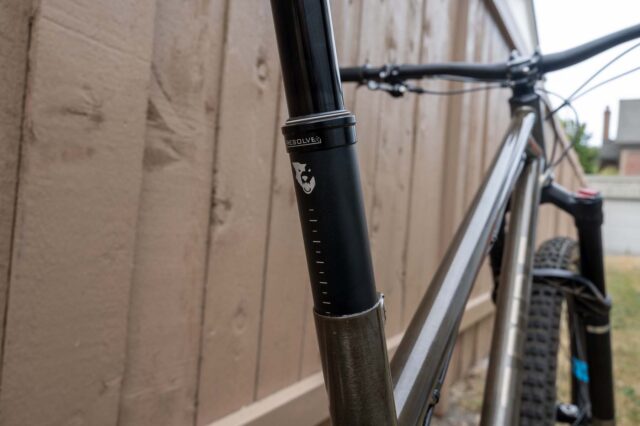
Intro
Wolf Tooth has been in the dropper post lever game for a long time now; they made one of the first really nice ones on the market, back when most of the standard ones that came with posts were pretty lousy. But it still came as a surprise when they launched their first dropper post late last year. Not only was it a very new category of product for Wolf Tooth, but the dropper post market has matured a ton in recent years — reliable, affordable options now abound.
That didn’t stop Wolf Tooth from going big and making a decidedly premium dropper post and — quite impressively — they’ve managed to make one that truly stands out in a number of ways. They’ve given their longstanding (and still quite nice) ReMote a solid upgrade too, in the form of the new ReMote Pro.
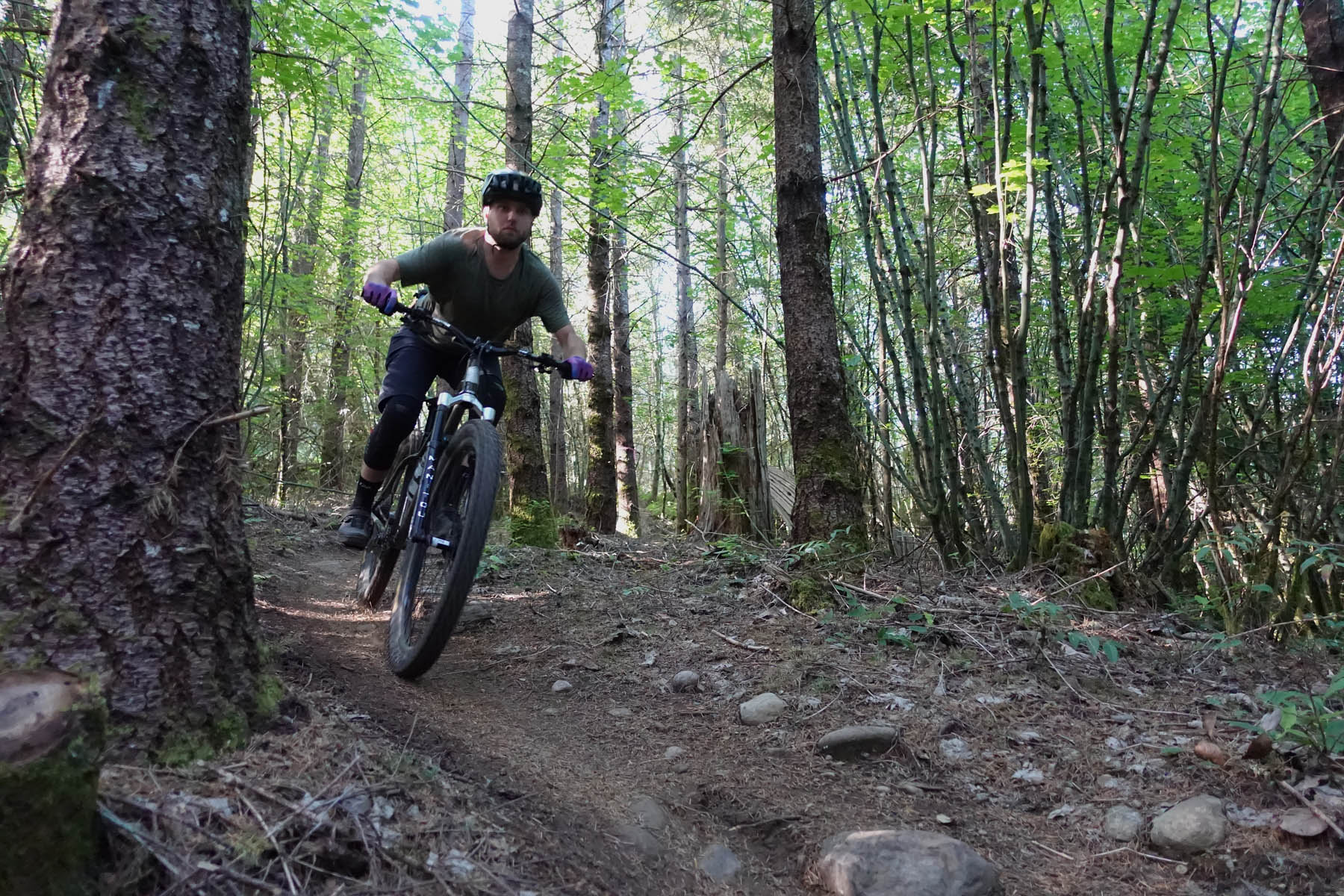
Design and Options
Let’s start with the Resolve post itself. It’s a normal-looking dropper post, with internal routing only, a relatively conventional two-bolt seat clamp, and it’s offered in 30.9 and 31.6 mm diameters (no 34.9 mm one, at least for now, but folks whose frame takes that size can always use a shim). Both diameters are offered with 125 mm, 160 mm, or 200 mm of drop, all of which can be lowered by up to 50 mm in 5 mm increments by installing internal spacers. Doing so requires taking the post apart, but can be done at home, or Wolf Tooth can pre-install spacers for you at the time of ordering. The 125 mm version of the post retails for $349.95, and each step up in length adds $15 to the price; you can also upgrade to titanium seat clamp hardware (in your choice of three colors) for $12.95.
The Resolve uses a hydraulic cartridge to lock the post in place, and a user-adjustable air spring to return it to the upright position when unweighted. The Resolve locks anywhere in its travel range and uses a standard derailleur cable with its head positioned at the seatpost end, which makes routing easier than posts with the cable head at the lever. Wolf Tooth recommends that you use their ReMote Pro (more on that below) with the Resolve, but says that many other levers will work, and they sell a bolt-on cable barrel for the post if you want to use a lever that routes the cable in the other direction. The actuator on the bottom of the post rotates to make it line up more neatly with the cable on frames with an obstruction or that put the housing exit very near the bottom of the post.
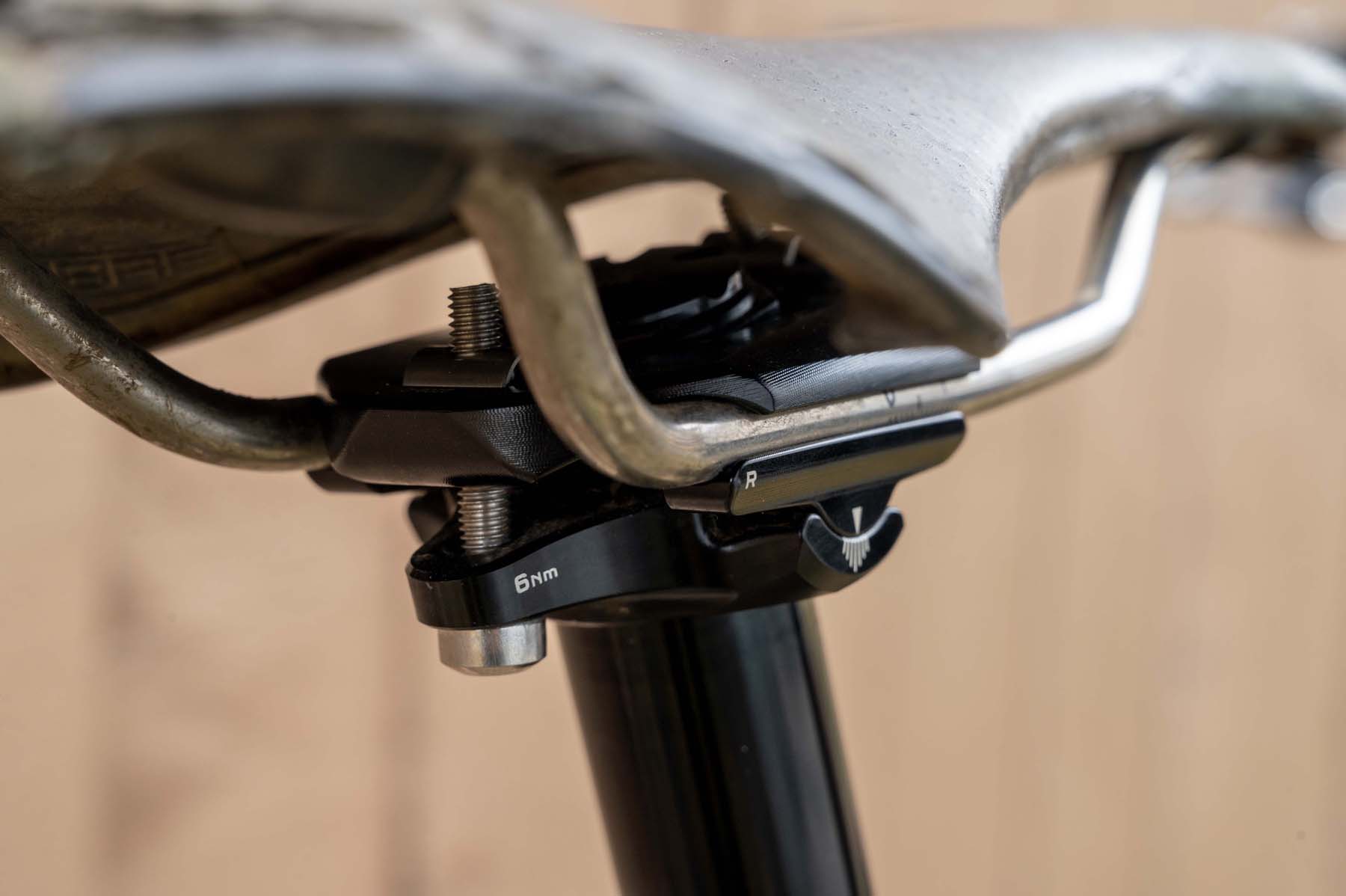
That’s all pretty normal, but things get a lot more interesting when you look at the finer details, starting with the inner workings of the Resolve. A lot of less expensive posts use a replaceable sealed cartridge (many of which come from the same manufacturer, even across different brands of posts), but the internals of the Resolve are Wolf Tooth’s own design and are fully user serviceable. And in contrast to most other posts on the market, the Resolve is self-bleeding, to automatically purge any air that can get into the system (which tends to make posts spongy at the top of their travel) when the post is lowered.
It’s a similar concept to the Bike Yoke Revive (and the Manitou Jack), except that instead of relying on a lever at the post head to activate the purge function, the Resolve does it automatically when the post is lowered. The way it works is impressively simple and clever.
Like the Revive, the Resolve has two concentric internal tubes, the inner of which is filled with oil, and the outer of which is partially filled with oil and partially with pressurized air (via a standard Schrader valve in the middle of the seat clamp). A valve connected to the actuator at the base of the post separates the two, and when the valve is opened and the seat is weighted, the post lowers, forcing oil out of the inner tube into the outer one through the valve; if the valve is opened with the post unweighted, the pressurized air at the top of the outer tube forces oil back into the inner tube and pushes the post up. If the post remains more or less upright, no air should enter the inner tube, and the post stays rigid.
But no sealing is ever 100% perfect, and if you hang the post upside down or turn the bike over — especially if you actuate the post in that orientation — some air can enter the inner tube, making the post spongy. That’s where the self-bleeding function comes in. In short, the piston assembly displaces (almost) all of the oil out of the inner tube at bottom out, and in doing so displaces any air that’s made its way in there, too. Any air that was in the inner tube makes its way to the outer one, where it floats to the top, provided that the seatpost is more or less upright. Then if the post is raised again while still remaining upright, oil from the lower part of the outer tube is drawn into the inner one, and voila, it’s bled again.
Keeping the height of the Resolve short was a top priority for Wolf Tooth, in order to help people get the maximum amount of seatpost drop that they can fit on their given frames. Wolf Tooth says that the lowered stack height (i.e., the distance from the bottom of the collar to the center of the rails, with the post lowered) is the shortest on the market, at 32 mm. Indeed, we’re not aware of a shorter one, though the Resolve only just edges out the OneUp V2, by a single millimeter. Still, the OneUp is also notably short, and the majority of posts out there have a taller stack height by a significant margin.
The insertion depth of the Resolve is also notably short. Though, in the battle for the shortest post per amount of drop, it’s once again neck-and-neck with the OneUp, and the post that’ll achieve the most total drop in a given application depends on the details, since the two come in substantially different sizes. For example, a 210 mm OneUp technically has slightly less total height per amount of drop than a 200 mm Resolve, but if you shim the OneUp down to 200 mm, the Resolve pulls ahead by a few millimeters; conversely, a 160 mm Resolve has more drop per length than a 150 mm OneUp, but that flips once you shim the Resolve to 150 mm. In short, both posts are more “efficient” length-wise at their maximum drops, and fall off once you start shimming them shorter. Which post will get you the most drop in your frame essentially comes down to which one you need to shim shorter by the least amount (though it’s also worth noting that the Resolve tops out at 200 mm of drop, whereas the OneUp keeps going to a whopping 240 mm). Overall, the OneUp and the Wolf Tooth Resolve are the clear frontrunners for drop-per-length of all the posts that we’ve tried / are aware of.
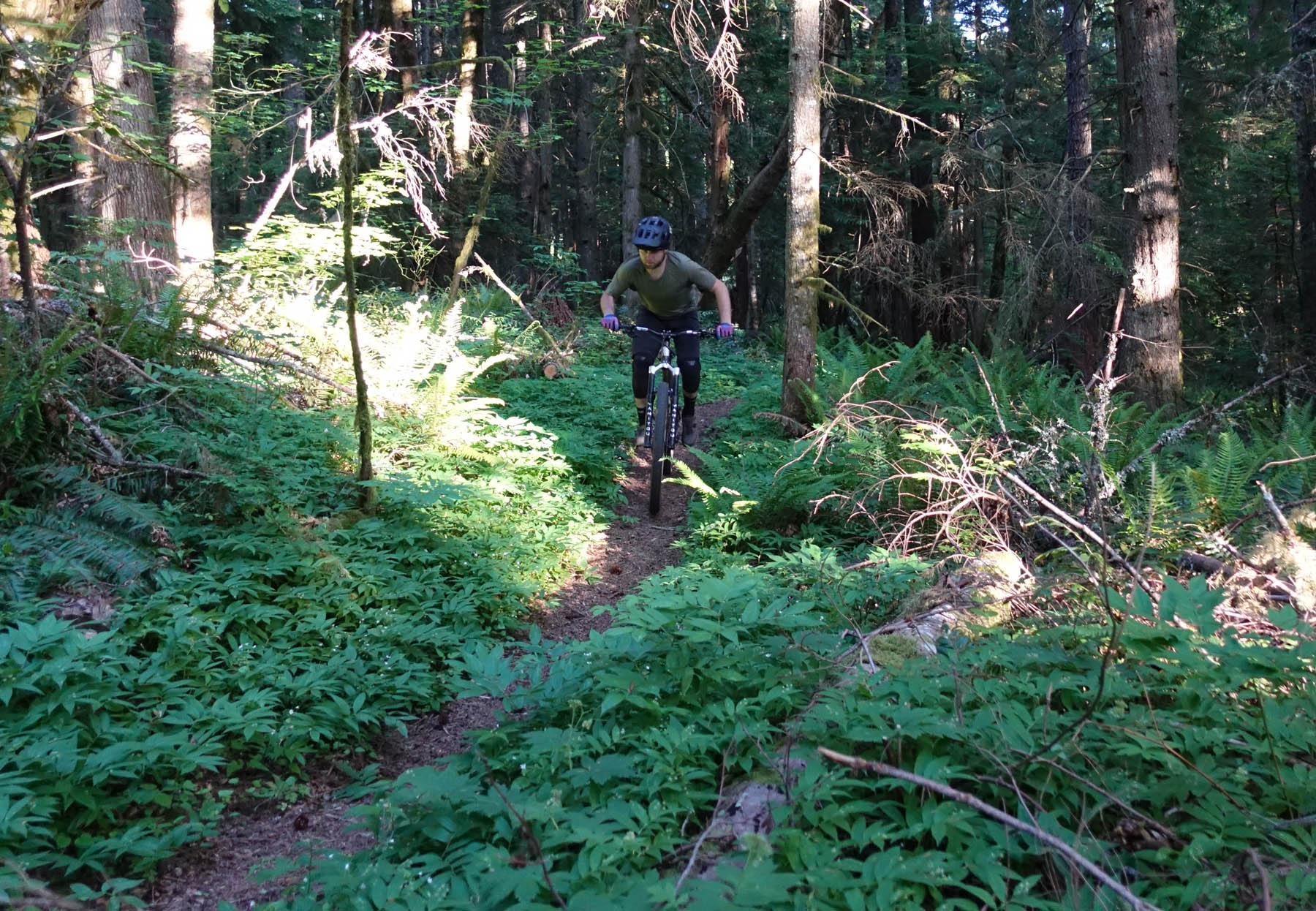
Wolf Tooth has some other clever details in store, too. Since the raising and lowering of the post draws air in and out of the main body of the post (outside of the inner hydraulic workings), due to the displacement of the stanchion, they’ve added an air filter at the bottom to avoid sucking whatever dust or other gunk might find its way into your seat tube, helping prolong the life of the sliding parts of the post. The brass guide pins that keep the stanchion from rotating in the lower post are available in four different diameters (in 0.02 mm increments) so that you can dial in the right size to minimize the amount of rotational play in the post due to tolerance stackup or just regular wear. Every single part of the Resolve is available separately from Wolftooth and the entire post is user-serviceable with basic hand tools; it doesn’t need to be sent in for a rebuild, the cartridge doesn’t need to vacuum bled, and so on. You can even swap outer tubes if you want to change between 30.9 and 31.6 mm posts without having to buy a whole new one.
I also really like the seat clamp on the Resolve. It’s a mostly conventional two-bolt design, but the hardware is all especially high quality, the bolts are angled out away from the post so that they’re easy to adjust even with a bulky multi-tool, and the lower cradle is attached to the upper head, so there are fewer parts to align and it’s easier to get the seat installed without knocking things out of place. It’s not a huge difference at the end of the day, but it’s just a little easier to install a seat on the Resolve than most other two-bolt posts out there (which are still generally my favorite style, for their security and ease of fine-tuning seat angle).
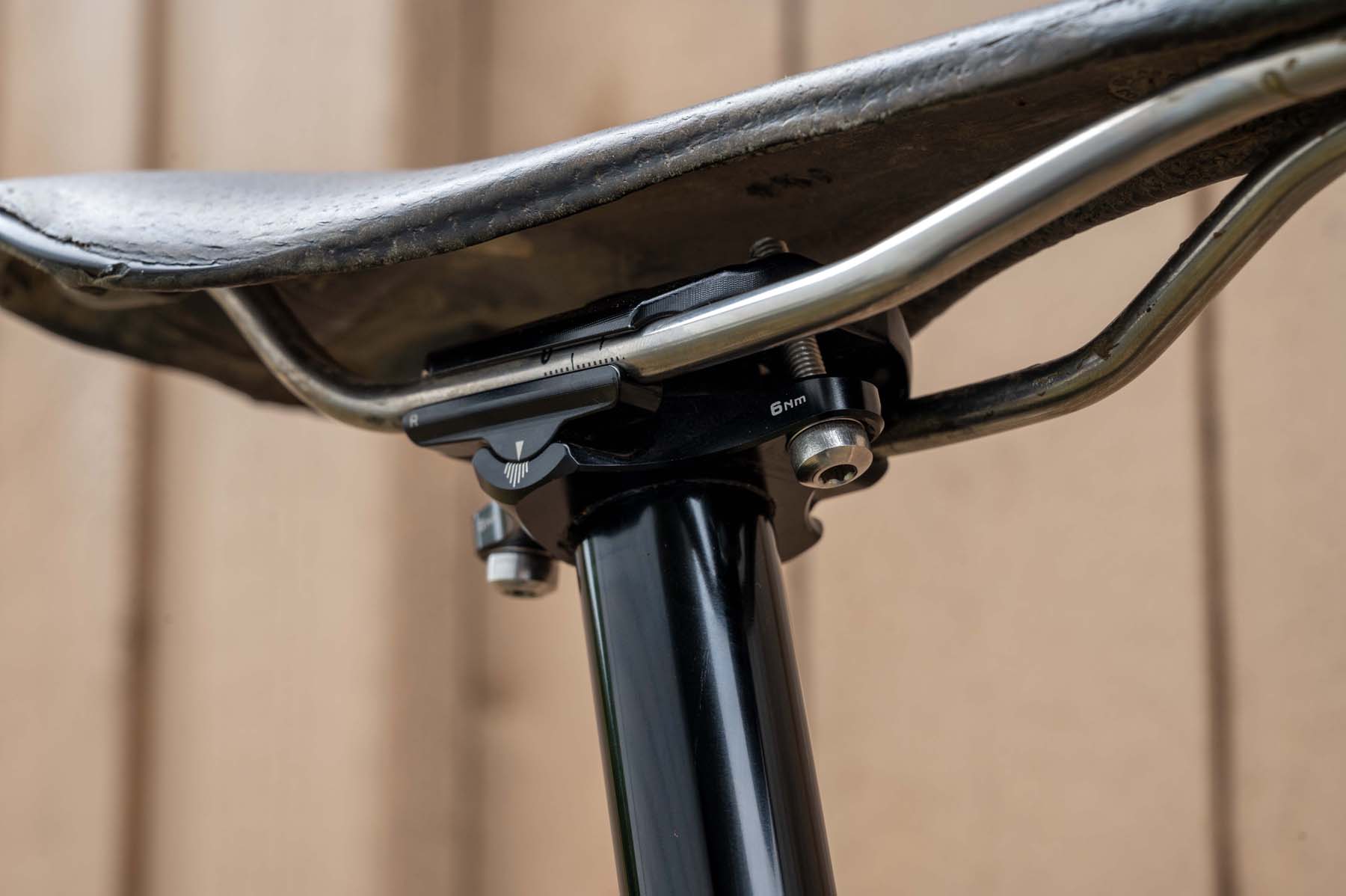
The new ReMote Pro that Wolf Tooth rolled out to go with the Resolve is quite nice, too. The overall form factor is very similar to the original ReMote (which is still available, for a more modest $54.95), but with a couple of key refinements. The thumb paddle has been slightly reshaped, with bigger chamfers on the perimeter for a smoother feel, and it now features an adjustable angle about the bearing that it spins on, by way of a clamp-on paddle that’s secured with a bolt on the back side. For the 22.2 mm bar clamp version, the bar clamp now gets its own dedicated bolt, which means that the lever paddle no longer comes loose from the lever body when not clamped around a bar, as on the standard ReMote. It’s not a big deal, but that mostly just simplifies installation, since there are fewer things that need to be held in alignment to get everything bolted up (though it probably doesn’t make as much difference on the integrated clamp versions, since those get separate bolts on the standard ReMote anyway).

On The Trail
Okay, that was a lot of words about the design of the Resolve and the ReMote Pro — how do they actually work?
When it comes to the most important stuff — going up and down when I want it to, and staying put otherwise — the Resolve has worked great. So do most other modern posts, and honestly, I’ve largely been of the opinion that the gains to be found in going for more premium options tend to be pretty limited, now that many of the more affordable ones have gotten to be quite reliable. But the Resolve still manages to stand out in a few ways.

The biggest one is just how smooth it is, both in terms of the movement of the post itself and in how light and consistent the action of the ReMote Pro feels. If you’re just raising the post fully and slamming it to the bottom, that probably doesn’t matter much. But that smoothness definitely makes it easier to put the Resolve in a specific spot in the middle of its travel than most other posts; e.g., if you want to lower it very slightly to change up muscle usage — something I really like doing on all-day epics when I’m getting tired. It also just feels really nice which, while probably not a big point of differentiation from a performance standpoint, still makes going back to other less smooth posts feel a little clunky. On another note, and while this doesn’t tend to be an issue for me personally, the Resolve and ReMote Pro combination would be one of my top recommendations for folks with limited thumb mobility or strength, who find it hard to actuate normal dropper levers (probably behind only the much more expensive and 170mm-max-travel RockShox Reverb AXS).
The Resolve does have a notable clunk when it hits the ends of its travel but it doesn’t feel harsh, and I personally appreciate the feedback that the post is done moving. The return speed is also on the faster side, but not by so much as to feel like it poses a risk to one’s nether regions (anybody remember the original Gravity Dropper?)
The ergonomics of the ReMote Pro are also great. After a little fiddling with the lever angle, I quickly had it sitting where I wanted it, readily at hand but out of the way when I wasn’t reaching for it. The throw is reasonably short, but the action is still very light; the paddle is grippy without feeling coarse or rough; and the bigger chamfers around the edges, as compared to the standard ReMote, are more comfortable if you catch the side of the paddle with your thumb rather than landing squarely on it. There are lots of dropper levers that work well these days, many of them for less money, but the ReMote Pro is one of the nicer feeling (and better looking) ones out there.

Wolf Tooth also says that the Resolve works well in very cold temperatures — which can definitely be a problem with a lot of dropper posts — but I can’t say that I’ve had many opportunities to find out. It’s rare that I’m riding in sub-freezing temperatures here in Western Washington, and we got our Resolve test post in early spring when the coldest part of winter was well behind us. If any dropper-post manufacturer knows about using them in super cold weather, Minnesota-based Wolftooth has to be at or near the top of the list, and given the overall quality of the Resolve, I don’t have any reason to doubt them when they say it works well down to -20° F (-29° C), but I can’t say much more than that.
Durability
The Resolve has been trouble-free for four-plus months of use now, and I can confirm that the self-bleeding feature works as advertised. My bikes generally get stored hanging from the front wheel, which puts the post upside down and makes it prone to ingesting a little air into the inner tube. I’ve found that to be a real irritation on the Bike Yoke Revive / Manitou Jack, with their manual reset function, but the automatic reset of the Resolve streamlines the process enough that I really don’t mind. Would it be ideal if it never needed to be reset at all? Sure, but the design of these self-bleeding-style posts, and the fact that they need to not have a physical barrier between the air and oil in the internals to work, somewhat ironically makes them more prone to needing the self-bleeding function. Given how seamlessly the Resolve’s system works, I’m happy with the tradeoff, even with my hanging-only storage situation.
[Wolf Tooth recommends hanging the bike with the Resolve fully or partially extended to mitigate the need to use the self-bleeding function, and while that definitely helps, it doesn’t 100% solve the issue.]
I did have one issue with the ReMote Pro when I first started testing it, which was at least partially my fault — on one of my first rides, I tried to readjust the angle of the paddle with my multi-tool and broke the paddle when re-tightening the bolt.
It turns out that the torque spec on that bolt is just 1 Nm, and I almost certainly just overtightened it. In my defense, that’s a very low torque for an M4 bolt, and I am genuinely good about not ham-fisting things like that in general. Should I have checked the torque spec and been more careful? Definitely, especially since it’s etched right on the paddle. Do I think it was surprisingly easy to break off the tab? Honestly, yeah. The wall gets really thin underneath the counterbore for the bolt head, and it doesn’t take much torque to cause a problem.
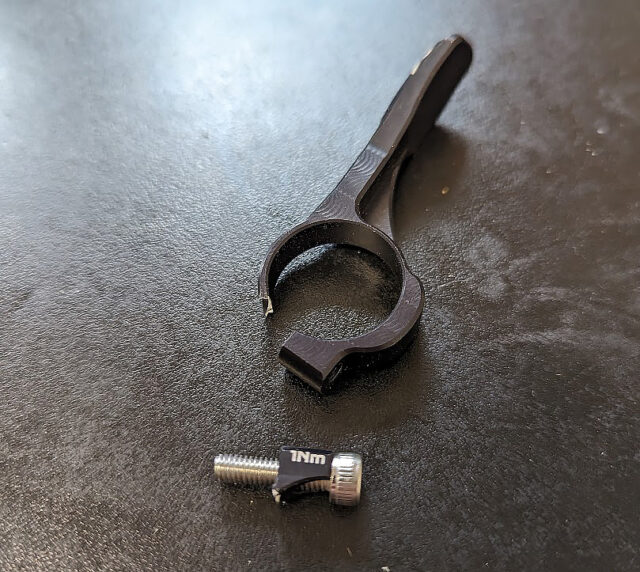
The good news is that (1) its still possible to actuate the remote even with the paddle broken off (by pushing on the cable clamp bolt), so my ride wasn’t ruined, (2) Wolf Tooth sells just the replacement paddle, so you’re not out a whole remote if you make the same mistake, and (3) it’s fine if you just adhere to the torque spec. Consider yourself warned.
While I didn’t have any need to for performance reasons, I have given the Resolve a teardown just to test the user serviceability aspect and can confirm that it is, in fact, quite straightforward. If you can do a lower-leg service on a fork (and you can do a lower-leg service on a fork, I promise), the Resolve is going to be a cruise. The only slightly oddball tool needed is a hollow 16 mm triple square socket; Wolf Tooth sells one of those for a whopping $2.95.
Bottom Line
For the most part, I’m not a big proponent of high-end dropper posts. E.g., the OneUp V2 is going to work great for most people, it’s relatively affordable, and it offers a lot of drop for the overall length. And some of the high-end options from the bigger players — notably the Fox Transfer and the RockShox Reverb — manage to be both expensive (at MSRP, anyway) and not particularly reliable.
However, Wolf Tooth has pulled off something impressive with the Resolve. It’s an exceptionally smooth post with a really short stack height, notably low weight, dialed self-bleeding system that should keep it working nicely for years to come, and a readily user-serviceable design with a full complement of replacement parts available, should the need arise. While it’s not the absolute cheapest way to make your seat go up and down, the price premium for the Resolve is, I think, going to be well worth it for folks who are willing to pay a little more for some of those upsides. It’s an excellent post — and feels especially impressive since it’s Wolf Tooth’s first attempt at one.

Great write up, especially the techy details. Found myself more drawn in on those for this piece than details in other reviews about suspension components and full-suspension anti-squat yadda-yadda. Probably going to spring for one of these as my Fox Performance hangs up in the middle often and this seems like definitely something I’ll move from bike to bike for years.
Great review David! I’ve had my Resolve for about the same period of time and it’s been flawless. Connected to the oneup v2 dropper lever without any issues. It’s like buying nice tools, you don’t need it, but it’s an option if you’re willing to pay for the benefits it offers. It’s honestly such an enjoyable experience every time you use it. How effortlessly it drops when I sit on it, the speed it returns, and that beautiful top up clunk, it all just feels spot on. I have a oneup v2 dropper on another bike and it just doesn’t feel special the way the Resolve does. And the fact when it needs some love, I can simply replace some oil and seals instead of having to throw away an entire metal cartridge is the cherry on top.
First thing I did when I got that lever was snap the paddle, just like you. The fact that it is so thin and whimpy is a terrible design decision and I’m very disappointed. It is not confidence inspiring in the least. To their credit, they warrantied it no questions asked, but hopefully the new one they sent me won’t snap the first time I lay the bike down hard (though lm sure they could spin it as a “protective feature”). They need to redesign that lever ASAP in my opinion, that fragile of a MTB part is unacceptable.
Sounds like they copied the Germans! Love my Bike Yoke Revive Max